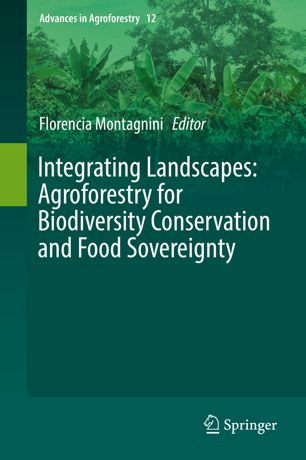Ver ítem
- xmlui.general.dspace_homeCentros Regionales y EEAsCentro Regional Patagonia SurEEA Santa CruzPartes de librosxmlui.ArtifactBrowser.ItemViewer.trail
- Inicio
- Centros Regionales y EEAs
- Centro Regional Patagonia Sur
- EEA Santa Cruz
- Partes de libros
- Ver ítem
Carbon Sequestration in Temperate Silvopastoral Systems, Argentina
Resumen
Silvopastoral systems (SPS) provide a wide range of non-provisioning ecosystem services including carbon (C) sequestration. Well-managed SPS outperform both grasslands/pastures and forests in terms of C by increasing soil and biomass C storage. In this Chapter, C sequestration information from native forests and tree plantations under silvopastoral management in Argentina is provided. C sequestration at the stand level (including importance of soil, stand
[ver mas...]
Silvopastoral systems (SPS) provide a wide range of non-provisioning ecosystem services including carbon (C) sequestration. Well-managed SPS outperform both grasslands/pastures and forests in terms of C by increasing soil and biomass C storage. In this Chapter, C sequestration information from native forests and tree plantations under silvopastoral management in Argentina is provided. C sequestration at the stand level (including importance of soil, stand age, site quality and crown classes on the magnitude of C pools in above- and below-ground biomass and forest floor pools) and landscape level also are provided. Results highlight the importance of SPS as efficient carbon sink ecosystems. In the Chaco region, a mature forest of Aspidosperma quebracho blanco stored 67.6 Mg C ha−1 and this value decreased 17% when managed under the new guidelines of Forest Management Incorporating Livestock due to the reductions in tree density and shrub cover. In the same region, the soil organic C (100 cm depth) stored in a silvopastoral system ( Prosopis alba trees with Chloris gayana pasture) was higher than in an adjacent grazing beef cattle pasture (84.7 vs. 64.6 Mg C ha−1). The magnitude of the impact of implementing SPS on carbon stocks at the regional level across the Dry Chaco depended largely on the landowner’s decisions and on the initial natural vegetation condition. In the Mesopotamia region, SPS became a promising alternative for soil organic carbon storage and wood production simultaneously. In Patagonia, the total C stored in the SPS showed an intermediate value of 148.4 Mg C ha−1 compared with primary forest and adjacent open grasslands. Ponderosa pine plantation added carbon (65–210 Mg C ha−1) to the Festuca pallescens grasslands ecosystem (2.6 Mg C ha−1) which represents the baseline system under study. C storage in SPS is an important mitigation strategy in the context of rapidly increasing level of CO2 in the atmosphere and its potential effect on global climate change.
[Cerrar]

Autor
Peri, Pablo Luis;
Banegas, Natalia Romina;
Gasparri, Néstor Ignacio;
Carranza, Carlos;
Rossner, Maria Belen;
Martínez Pastur, Guillermo José;
Cavallero, Laura;
Lopez, Dardo Ruben;
Loto, Dante;
Fernandez, Pedro David;
Powel, Priscila;
Ledesma, Marcela;
Pedraza, Raúl;
Albanesi de Garay, Ada Susana;
Bahamonde, Héctor Alejandro;
Eclesia, Roxana Paola;
Piñeiro, Gervasio;
Fuente
Integrating Landscapes: Agroforestry for Biodiversity Conservation and Food Sovereignty / editor: Florencia Montagnini. [Estados Unidos?] : Springer International Publishing, 2017. p. 453-478
Fecha
2017
Editorial
Springer
ISBN
978-3-319-69370-5
978-3-319-69371-2
978-3-319-69371-2
Formato
pdf
Tipo de documento
parte de libro
Palabras Claves
Derechos de acceso
Restringido
 Excepto donde se diga explicitamente, este item se publica bajo la siguiente descripción: Creative Commons Attribution-NonCommercial-ShareAlike 2.5 Unported (CC BY-NC-SA 2.5)
Excepto donde se diga explicitamente, este item se publica bajo la siguiente descripción: Creative Commons Attribution-NonCommercial-ShareAlike 2.5 Unported (CC BY-NC-SA 2.5)

